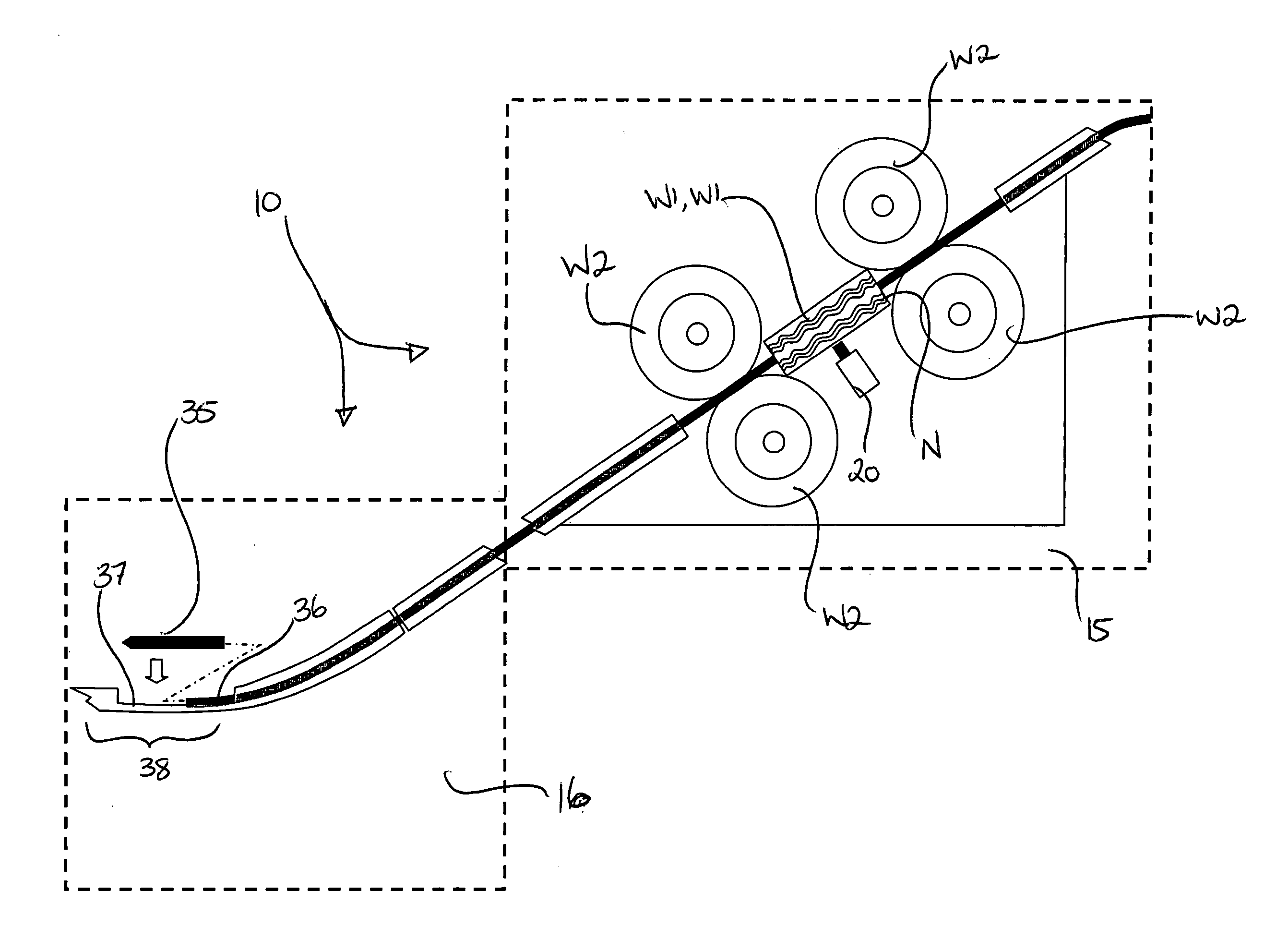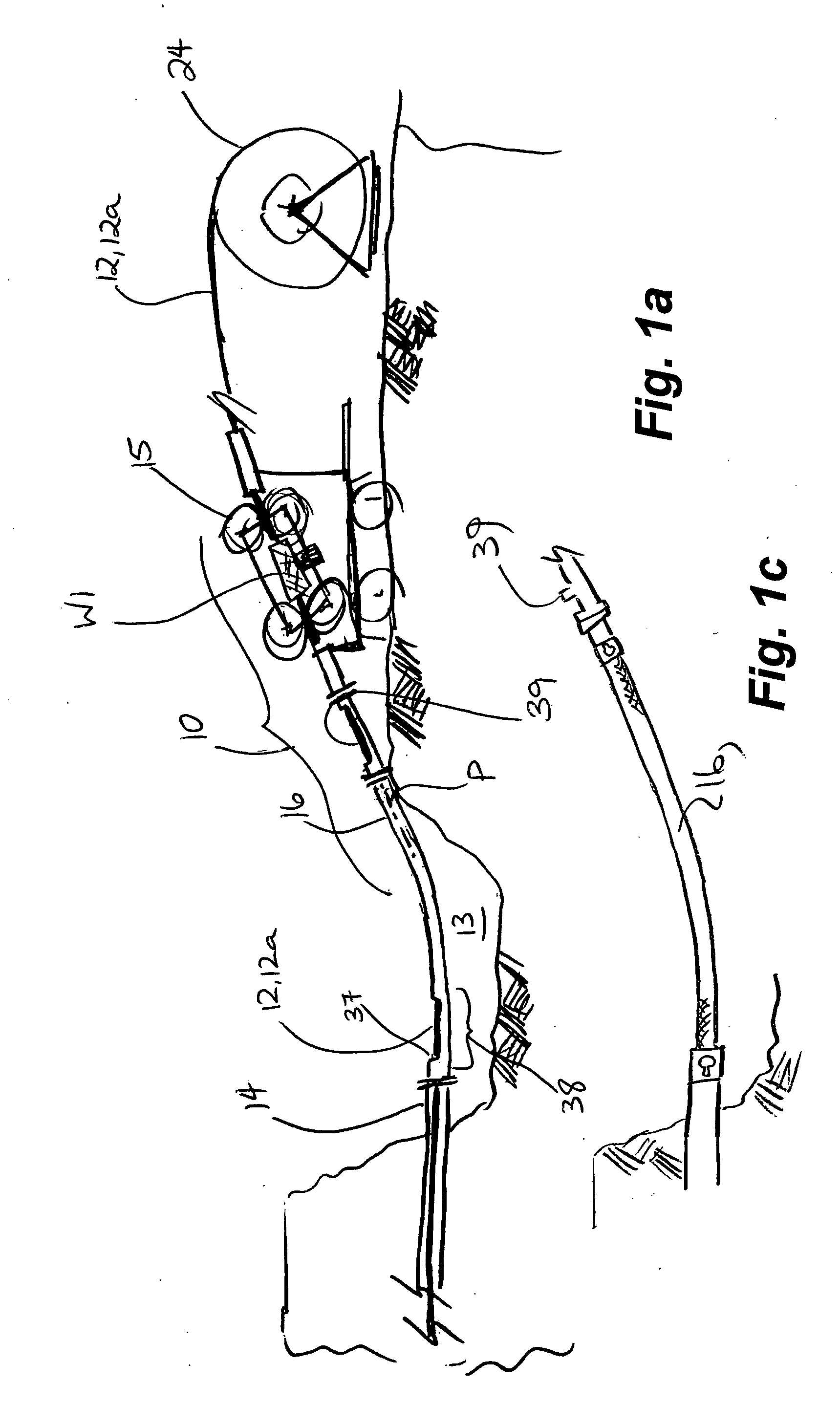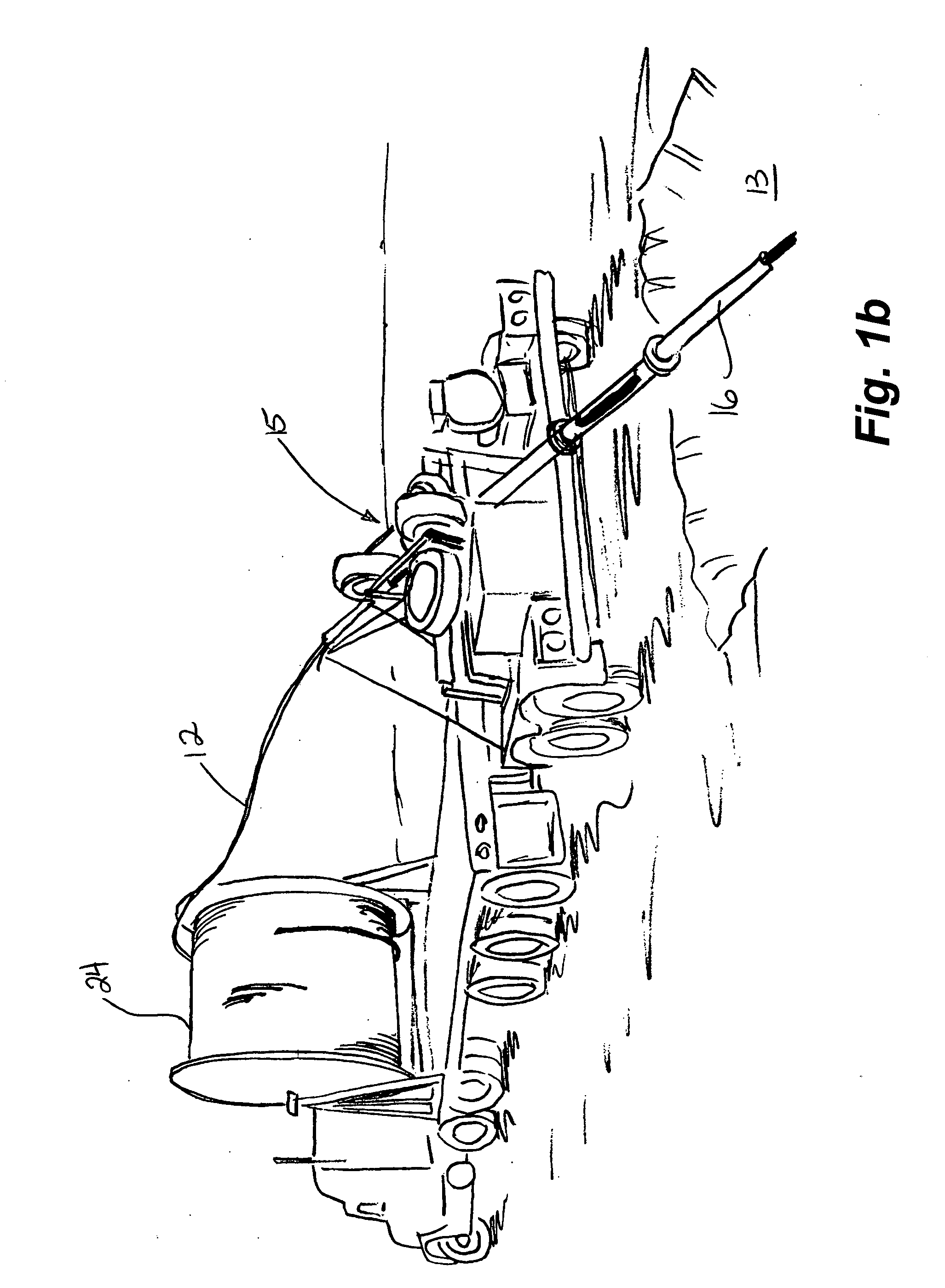Apparatus and method for lining in situ pipe
a technology of in situ pipelines and apparatus, applied in mechanical apparatus, pipe elements, fluid removal, etc., can solve the problems of deteriorating pipe sections, affecting the lifespan of the pipe, and excavation of pipelines or pipes, so as to improve the preparation of the bore
- Summary
- Abstract
- Description
- Claims
- Application Information
AI Technical Summary
Benefits of technology
Problems solved by technology
Method used
Image
Examples
Embodiment Construction
[0023] Having reference to FIG. 1a, apparatus 10 is provided to frictionally drive a flexible liner 12 from an elevation above an excavation 13, into and through an exposed end of an in situ pipe 14, located at a lower elevation such as adjacent a bottom of the excavation 13. The apparatus 10 comprises drive means 15 and a guide tube 16 extending between the drive means 15 and the pipe 14. The drive means 15 need not be aligned with the pipe 14.
[0024] The drive means 15 provides sufficient thrust to advance the flexible liner 12 through the guide tube 16 and through the pipe 14. The guide tube 16 is sufficiently rigid to elastically direct the liner through the guide tube between the drive means 15 and the pipe 14.
[0025] Generally, a flexible continuous composite line pipe is typically 2 inch diameter from FIBERSPAR® LinePipe™ from Fiberspar Corporation, suitable to line 4 inch diameter pipe 14.
[0026] Best seen in FIGS. 2, 3 and 4, the drive means 15 comprise at least a first pai...
PUM
 Login to View More
Login to View More Abstract
Description
Claims
Application Information
 Login to View More
Login to View More - R&D
- Intellectual Property
- Life Sciences
- Materials
- Tech Scout
- Unparalleled Data Quality
- Higher Quality Content
- 60% Fewer Hallucinations
Browse by: Latest US Patents, China's latest patents, Technical Efficacy Thesaurus, Application Domain, Technology Topic, Popular Technical Reports.
© 2025 PatSnap. All rights reserved.Legal|Privacy policy|Modern Slavery Act Transparency Statement|Sitemap|About US| Contact US: help@patsnap.com



